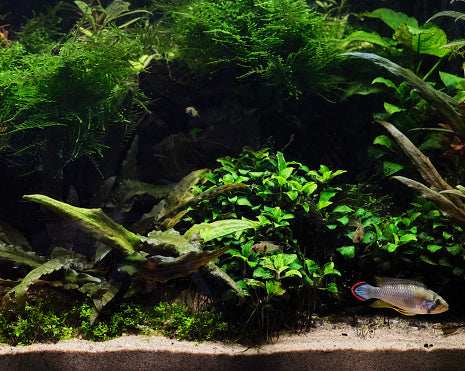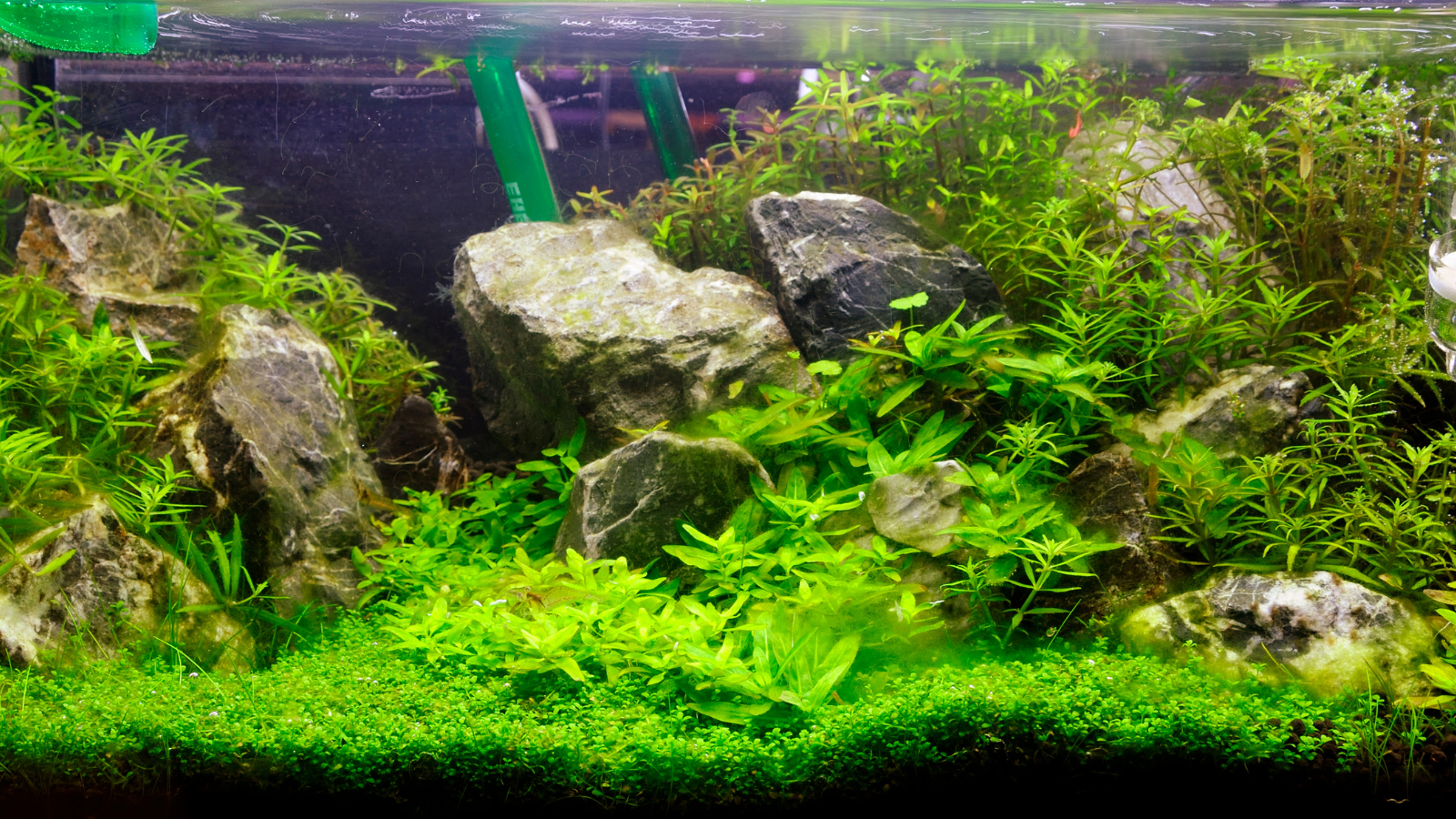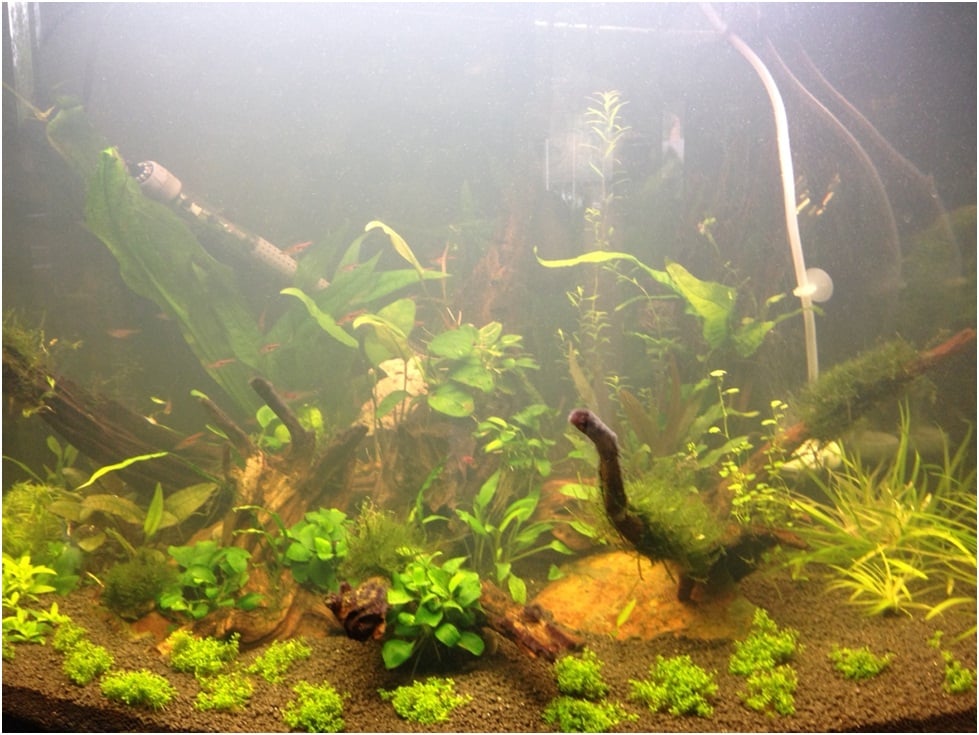
Using dirt in aquarium
Before Takashi Amano revolutionized the planted tank hobby by introducing CO2 and before the introduction of “Aqua Soil”, hobbists either use dirt capped with sand or just plain gravel. This was the old way but it does not mean that it’s wrong and the new way is better. It’s just another means of achieving the results of healthy plant growth.
Let’s start by comparing the benefits and disadvantages of the 2 aquarium substrates. Aqua soil was born out of the need to provide the aquarium owners a less silty option for the planted tank. This is the main advantage of this product when compared to dirt. With aquarium soil substrate, re-scaping is not a big problem as this substrate is bound by resin and is pelletized. There is a very little chance of ending up with cloudy water should the hobbyist decide to move live plants around and redesign the aquarium. Dirt, though messier can be as clean looking if executed correctly and the hobbyist should practically get the same results if dirt is used correctly.
What is Aqua soil?
Aqua soil boasts of its C.E.C (Cation Exchange Capacity) meaning the substrate has the capacity to absorb nutrients and hold it for plant use but so does laterite and/or clay. In fact, most soils have this capability. Some may have this higher than others but they still possess it nonetheless. A lot of hobbyists are afraid that dirt could lead to initial algae bloom. The appearance of algae in the aquarium is attributed to a lot of factors and for those who have not tested their Aqua soil thoroughly, most brands of Aqua soil do leach ammonia and nitrates the moment the aquarium is flooded. It is a proven fact. A 9-liter bag of aquarium soil could cost anywhere from $20 to $70 depending on the brand. Dirt will cost you only less.
Getting Started
The success of a planted aquarium depends largely on what soil is being used. A very rich substrate is not needed in this case. That will only cause problems later on. The term “Dirt” in this topic does not refer to garden soil. Garden soil is full of organic matter which will leach a lot of harmful microorganisms into the aquarium. Normal soil is recommended – the kind found in everyone’s backyard. Make sure the dirt does not have a lot of decaying matter in it. Aquatic plants, those found usually growing on soil that has had most of its nutrients washed away by the water. With exception of a few heavy root feeders most aquatic plants, especially stem plants get their nutrients from the water column and not the soil they are anchored on. It is this eco system that we aim to recreate on a dirtied aquarium setup. It is recommended to use at least 3 types of soil for this setup.
The first layer
Gravel, as the first layer is optional in this case. The bottom of the tank can be laterite or any form of clayish soil. Do not add fertilizers of any kind at this point. Should you decided to put root tabs later on, the clay should be able to absorb it so it can be readily available for your plant’s roots. Scatter the clay/laterite over the bottom of the aquarium or have it at maximum of an inch thick. Any thicker and the tank would be in danger of having air packets which will be disastrous in the long run. Do not wet your soil when applying it on your aquarium. Nobody wants to scape with mud.
The second layer
The second layer should be a mixture of 1 part loam soil to 4 parts normal soil. This will be the main substrate to use in growing plants. Make sure the loam is composted properly and no longer contain decaying matter. Remove any leaf litter or twigs. Do not mix gravel with your soil. The Tank will only likely end up getting a substrate as hard a s concrete if you do so. Gravel will only make it hard for the roots to penetrate once the soil settles underwater. Avoid compacting the soil as well while you apply it. If desired, have at least 2-3 inches of this mixture on top of your laterite. Do not be afraid to use more if needed.
The third layer
The last layer should be fine sand. You can use regular sand. This is done so you will not have the soil mixing with water. Do not use sand from the beach as it is bound to contain salts which will harm your plants. Make sure the sand is already washed and clear of silt. Do not use pea sized gravel as substitute for sand. Gravity will always pull the heavier objects down and you will soon end up having the gravel mix with your substrate in a few months’ time. Apply a thin layer on top of your soil. Maximum should be 1-inch-thick at the back part and 1 cm thick at the front. Apply thin layers of sand on areas where carpeting plants are going to be placed. Carpeting plants especially Monte Carlo and HC Cuba have short roots. To ensure that the plant roots reach the substrate, apply the sand thinly. Be mindful of applying it too thinly as you might end up with a lot of silt in your aquarium. Applying more than an inch of it and there is a risk of the sand being compressed and locked with the soil which makes the soil hard. This setup is now ready to plant. Spray the soil with water to make for easier planting. While flooding the aquarium, make sure to poke the substrate to remove air packets trapped in the substrate.
With this type of mixture and setup, there should not be any problems growing any type of live plants. This dirt mixture should allow for the addition of any fertilizing regiment like the E.I (Estimated Index) method. Like Aqua soil you can add root tabs after a year or a few months if you feel that the nutrients in the substrate is already depleted. To clarify, dirt does not cause the plant’s roots and stems to rot. Roots of some stem plants do in fact grow slower when planted in dirt compared to when planted in Aqua soil, but bear in mind that the main function of the roots for stem plants is so the plant can anchor itself. This should not be a hindrance as these aquarium plants have no problems absorbing nutrients from the water column.
Summary
There are no special rules or tricks in dealing with dirt substrate in the planted aquarium. Like Aqua soil clarity can be a problem if you do not have sufficient filtration. Algae can be a nightmare if you do not watch your photo period and fertilization. For Aqua soil, the initial setup can be messy if you are not careful. This method does require a bit more work if compared to just buying aqua soil, but like anything else in this hobby once can either work on it or spend. The main point is healthy and good plant growth and both ways are effective if done well. Enjoy your dirted planted tank! It's live plants time!


